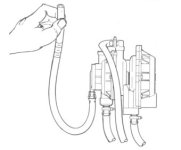Hi guys, few weeks back I posted (http://www.marineengine.com/boat-forum/showthread.php?434704-2002-Johnson-115-Surge-Bog-Smoke-issues ) about some troubles I’m having with my 2 stroke 115 Johnson. I am looking to do all I can before spending $450 on a new VRO as a last resort. I am looking to run the motor off an external tank tomorrow, I am looking for tips on how to rig up the external tank? Are there any other suggestions to troubleshooting?
Thanks
Link to older more detailed posts, any replies here or there are appreciated.
http://www.marineengine.com/boat-forum/showthread.php?434704-2002-Johnson-115-Surge-Bog-Smoke-issues
Thanks
Link to older more detailed posts, any replies here or there are appreciated.
http://www.marineengine.com/boat-forum/showthread.php?434704-2002-Johnson-115-Surge-Bog-Smoke-issues


